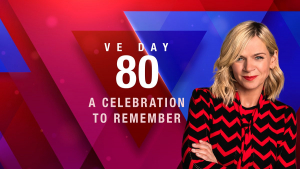-
.
Gareth Davies
Public Speaking – Why It’s a Great Opportunity – So Invest in Training!
Public speaking often ranks as one of the most common fears, but it’s also one of the greatest professional opportunities. Whether you’re speaking at a company meeting, industry event, or client pitch, how you present yourself can shape how others see your credibility, confidence, and leadership. That’s why getting it right matters – and why investing in professional presentation skills training is a smart move for anyone serious about success.
Many people see public speaking as a challenge to survive, rather than a skill to master. But when approached with the right training and mindset, it becomes a platform to influence, inspire and connect. A strong presentation can lead to new business opportunities, career advancement, or internal recognition. At The Presenter Studio, we help individuals and teams unlock that potential by turning nerves into impact.
Presentation skills training goes far beyond learning how to speak clearly or stand confidently. It’s about understanding your audience, structuring your message, and delivering it with authenticity. Great public speakers aren’t born – they’re trained. And with the right support, anyone can learn how to be engaging, persuasive, and memorable.
In our experience, the most successful presenters are those who see public speaking not as a task to dread, but as a moment to shine. It’s a chance to tell your story, share your vision, and represent your brand or business with professionalism and passion. But to do that effectively, you need the tools, techniques, and real-world practice that only tailored training can provide.
At The Presenter Studio, our presentation skills training courses are designed to give you exactly that. Whether you’re a seasoned speaker looking to polish your delivery, or someone stepping onto the stage for the first time, our training is customised to your needs. We work with clients to build confidence, improve clarity, and deliver messages that stick – all in a supportive, practical environment.
Public speaking isn’t going away. In fact, it’s becoming more important than ever in today’s fast-paced, communication-driven world. So why not turn it into one of your strengths? With the right training, public speaking becomes less of a risk – and more of a powerful opportunity to get right.
Ready to take your skills to the next level? Discover our full presentation skills training programme here:
https://www.presenterstudio.com/business-presenter-training/presentation-skills-training
Short Is Always Best – Media Training Courses That Get Results
When it comes to handling the media, one of the most effective pieces of advice we give our clients is this: short is always best. In today’s fast-paced media environment, attention spans are short, competition is high, and clarity is everything. That’s why our media training courses are designed to help you master the art of being concise, while still being compelling and authentic.
At The Presenter Studio, we’ve worked with professionals across every industry – from CEOs to spokespeople and thought leaders – and the most consistent mistake we see is trying to say too much. Whether it’s a live TV interview, a radio spot, or a quote for a journalist, long-winded answers often dilute the message. Media interviews aren’t conversations; they’re carefully timed opportunities to make an impact. That impact gets lost when you over-explain or wander off-topic.
Our media training courses are built to get results by showing you how to distil your message into clear, memorable soundbites. We teach techniques that help you say more with less, giving journalists exactly what they need while keeping control of your narrative. You’ll learn how to communicate your key messages with precision, confidence, and professionalism – no fluff, no jargon, and no wasted words.
Being concise doesn’t mean being cold or robotic. In fact, our training focuses on helping you sound natural and human while being focused and strategic. That balance is at the heart of great media performance. Through practical exercises and tailored feedback, we show you how to bring your personality forward in a way that supports your message, not overshadows it.
In today’s digital age, media content is clipped, quoted, and shared in seconds. That means the way you answer a single question can shape how you and your brand are perceived across multiple platforms. Our media training courses help you prepare for this reality, ensuring that your interviews work for you long after they’ve ended.
From mock interviews to on-camera practice, everything we do at The Presenter Studio is focused on real-world results. We don’t just teach theory – we coach you in the skills that matter most when it counts. Whether you’re preparing for a high-stakes interview, managing a crisis, or launching a new product, being able to speak with clarity and confidence can make all the difference.
"Getting your message right is crucial to your success. So many of our clients waffle. They find that speaking long suits them best. But it's not what the audience want or need", Gareth Davies CEO The Presenter Studio.
To discover how our media training courses can help you deliver maximum impact in minimal time, visit:
https://www.presenterstudio.com/business-presenter-training/media-training
The Importance of What You Wear – Presentation Skills Course
When it comes to delivering a powerful presentation, most people focus on the words they say and the slides they show. But there’s another crucial element that can dramatically impact your audience's perception of you: what you wear. At The Presenter Studio, we understand that presentation skills go beyond just speaking – they involve how you present yourself as a whole. That’s why we emphasise appearance as part of our comprehensive presentation skills course.
Clothing is a powerful tool for communication. Before you even say a word, your audience has already formed an impression based on how you look. Whether you’re presenting in a corporate boardroom, on a stage, or in front of a camera, your outfit contributes to your credibility, confidence, and clarity. The way you dress should reflect your message, your brand, and your audience.
In our presentation skills course, we work with professionals to not only improve their content and delivery but also to align their visual presence with their communication goals. What you wear can help reinforce your message. A structured, polished outfit can signal authority and preparedness, while a more relaxed style may help convey approachability and creativity. It’s about understanding the context of your presentation and choosing an outfit that enhances, rather than distracts from, your performance.
Another reason clothing matters is because of how it affects your mindset. Wearing the right outfit can boost your confidence and help you step into the role of an expert or leader. When you feel good in what you’re wearing, you’re more likely to deliver your message with impact and authenticity. During our training sessions, we guide clients through how to use this to their advantage, transforming nervous energy into confident presence.
Many of our clients come to us looking for practical, actionable advice they can apply immediately. One of the simplest changes you can make is to be more intentional with your wardrobe. A carefully chosen outfit can enhance your non-verbal communication and help your audience connect with you more effectively. We see time and time again how small adjustments to appearance can lead to significant improvements in presentation delivery.
A presentation skills course should cover all aspects of presenting – from what you say, how you say it, to how you look while saying it. That’s what makes our approach at The Presenter Studio different. We tailor our training to the individual, ensuring that every presenter leaves with a holistic understanding of how to deliver high-impact, professional presentations.
To learn more and take your presenting to the next level, explore our full presentation skills course at:
https://www.presenterstudio.com/business-presenter-training/presentation-skills-training
The Next Big CBBC Presenter? We Think So!
We are hugely proud of this presenter showreel at The Presenter Studio.
Kai first came on our one day how to make it as a TV presenter workshop and we thought he was great…he's naturally funny warm and friendly and basically a TV producer's dream.
So we chatted to Kai about coming on our one to one advanced programme which includes a meeting where we discuss you come up with a strategy and a plan of attack for your career and then we go away and write bespoke scripts and come up with a schedule for a filming day.
We filmed with Kai all across London in South London central London in some really great locations, showcasing his fun quirky quick witted comedic style but at the same time keeping it warm and friendly.
We've branded and marketed him for kids TV we really think he could do incredibly well. He feels like the next wave of those great BBC presenters and we're excited for his future.
So please check out the showreel that we did for him https://youtu.be/SNax-vDjsU4 and please comment and share below.
BBC Events - VE Day Concert Review - A Masterclass in Presenting
Did you catch the VE Day concert on BBC1 last night?
We loved it for so many reasons.
It was what the BBC do best. Quality live programming with heart.
It was paced beautifully - coming out of the BBC Events team, it didn't have the bang and wallop of an entertainment commission. Instead it felt like a warm nostalgic and respectful reminder of a time we must all learn about.
The VT's were glorious. Short vignettes offering personal stories of what time was like back then.
And it was all held together gloriously by the wonderful Zoe Ball. She seemed a little nervous at the start. A gentle reminder that nerves can be a positive thing - they show respect, warmth and humanity - the perfect tone and feel for the evenings event. It wasn't about the host - it was about the stories of the heros. And Zoe did the perfect job in setting that tone.
Congrats BBC Studios BBC for a truly wonderful night of TV.
#bbcevents #veday #livetv #broacast #presenter
Presentation Skills - 3 Top Tips
So I saw two presentations this week and I wanted to share my thoughts on both...as I think there are lots of helpful learnings here and lots of tips to share from us at The Presenter Studio.
1 When it comes to your presentations make sure they reflect the tone the feel of the brand that you're representing. We were lucky enough to hear from the team at wework which for me is an innovative energetic and young working space so therefore you'd expect the presentation to feel young and energetic.
2 Get your presentations off to a pacey dynamic start. If the opening of your presentation drugs lacks focus lacks engagement the audience quickly decides to be more passive in the session and not active in their listening first impressions really do count on many level.
And 3 – Slides! It's so surprising how many presenters rely so heavily on slides yet they can really feel old fashioned they can pull the focus and often visually they don't reflect the brand that you are representing. So if you are going to use slides ask yourself why do I need them do they reflect the visual nature of our brand and never present to the slide always present to the audience.
Hope these tips and tricks help!
#presentationskills #presentations #presentercoach #presenter
Why Personality Is the Most Underrated Presentation Skill
When it comes to presentation skills, one of the most common mistakes we see is people slipping into what we call “presenter mode.” It’s that moment where you start planning your talk and suddenly find yourself using corporate language you’d never normally say. You become formal, stiff, and oddly robotic. You forget who you are. And in doing so, you forget the very thing that makes a presentation work: your personality.
At The Presenter Studio, we always say people buy people. It’s so simple, yet so many of us forget this the moment we’re in front of a room or camera. We focus so hard on being professional that we forget to be personal. But the best presenters — the ones people remember, trust, and want to hear from again — are always the ones who bring themselves into the room.
Adding personality doesn’t mean being over-the-top or trying to be funny. It means being you. Speaking in your own voice. Sharing your perspective. Showing some warmth, humour, or vulnerability where it’s appropriate. It’s about having a conversation with your audience, not talking at them.
And here’s the key — audiences don’t want perfect. They want real. They want energy, insight, and human connection. When you show personality, you build trust. You make your ideas stick. You turn a presentation into an experience.
So how do you bring more personality into your presentations?
Start by writing the way you speak.
Don’t write a script full of jargon or corporate phrases you’d never say out loud. Think about how you’d explain your topic to a friend or colleague. Use natural language. Add in questions, pauses, even asides — anything that makes it feel more like a conversation.
Share something personal.
This doesn’t mean telling your life story, but a relevant anecdote or insight from your own experience can go a long way. It helps people connect with you. It shows you care. And it makes your talk far more engaging than just reading off stats or slides.
Find your style.
You don’t need to mimic other speakers or copy someone else’s tone. Some people are calm and measured. Others are bold and energetic. The best style is the one that feels right for you — and one that’s authentic to the brand you’re representing. Let your personality guide the tone, pace, and language of your delivery.
Practise sounding like you.
When you rehearse, listen back to how you sound. Are you stiff? Over-rehearsed? Or does it feel like you’re genuinely connecting with the audience? Practise until you find the rhythm that feels natural and personal. Confidence grows when you’re being yourself, not performing someone else’s idea of what a “good presenter” should sound like.
Your personality is your superpower. And in today’s noisy, content-heavy world, it’s often the difference between a presentation that’s forgotten and one that really lands.
So next time you prepare a talk, challenge yourself to strip away the unnecessary polish. Be clear. Be conversational. Be real. Because when you’re truly yourself, your audience will listen — and they’ll come back wanting more.
To learn how to present with confidence, clarity and personality, take a look at our bespoke training at
We’ll help you find your voice, own your style, and deliver presentations people want to show up for.
Media Training Courses: Why the Rule of Three Is Your Secret Weapon
One of the most powerful techniques we teach in our media training courses at The Presenter Studio is the Rule of Three. It’s simple, effective, and rooted in how people actually process information. Whether you’re preparing for a high-stakes TV interview, a podcast appearance, or a press panel, this tool helps you stay clear, focused, and in control.
This week, I was working with a client ahead of a big media appearance. They had so much to say — understandably — but the challenge was turning that wealth of knowledge into a message that would land. That’s where the Rule of Three came in.
The idea is straightforward. You start by identifying three key messages you want your audience to take away. These are your headline points — the big ideas that represent what you stand for, what matters to your brand, or what you want to influence.
Then, within each of those messages, you develop three sub-messages to support them. These might be examples, stats, anecdotes, or additional context that help bring your point to life.
Why is this so powerful? Because it gives your message structure. It creates a clear roadmap, not just for you as the speaker, but for your audience too. People are much more likely to remember what you’ve said when it’s grouped, repeated, and framed with clarity.
In the fast-paced, high-pressure world of media interviews, this kind of structure is a game-changer. It stops you from waffling. It keeps you on track. And it ensures that, even if the interview takes an unexpected turn, you always have a foundation to come back to.
But there’s more to it than just structure. The Rule of Three also helps refine your thinking. When you’re forced to distill your message into three clear ideas, you’re pushed to prioritise what matters most. It stops your content from becoming bloated or confusing. And in media, where time and attention are short, that clarity is crucial.
Audiences don’t remember everything — they remember what’s clear, consistent, and repeated. The Rule of Three taps directly into that.
So, the next time you’re preparing for a media appearance, ask yourself:
What are the three key things I want people to take away?
What are the three strongest supporting points or stories for each?
How can I repeat, reinforce, and stay centred on those ideas?
At The Presenter Studio, we’ve worked with CEOs, experts, celebrities, and entrepreneurs — and this method works across the board. It’s a framework that helps even the most nervous speaker feel prepared and confident. And it’s just one of the many tools we explore in our bespoke media training courses.
To find out more about how we can help you speak with clarity, authority, and personality in the media, visit: https://www.presenterstudio.com/business-presenter-training/media-training
If you’ve got something important to say, we’ll help you say it in a way that gets remembered.
Why Structure Is the Secret Weapon of Every Great Presentation
This week, I attended a presentation that really drove home one of the most common and costly mistakes we see at The Presenter Studio: a lack of structure. The speaker had interesting ideas and a clear passion for the subject, but they never quite got going. The talk drifted. There was no rhythm, no momentum, and no clear message. As an audience member, it was hard to stay engaged because we were all waiting for it to start making sense — and that moment never quite came.
When we work with clients, we always talk about structure being the backbone of a great presentation. It gives your content shape. It guides your audience through the story. And, crucially, it respects their time and attention.
One of the first things to think about is your opening. A lot of people take far too long to get started. They spend precious minutes introducing themselves, explaining what’s coming, or thanking people. But in today’s world, people want to get into the content quickly. If you think about any good TV show, it doesn’t meander at the top. It hooks you straight away. It draws you in with something interesting, then gets on with the story, the competition, or the drama.
Your presentation should do the same. A snappy, focused intro can set the tone and establish your authority. But it should be just that — a start, not the main event.
From there, your structure should take your audience on a clear journey. This might sound simple, but it’s something a lot of people forget. Without a roadmap, even the best content can feel confusing or disjointed. Structure creates flow. It helps people follow your ideas and understand how each part of your talk connects to the next.
It also helps you manage time. One of the biggest signs a presentation lacks structure is when it overruns or ends in a rush. Structure gives you natural time markers. It tells you when to move on, where your turning points are, and how to land a clear, memorable ending.
Another benefit of structure is that it allows you to lead rather than list. Presentations can easily become a series of bullet points or facts. But people don’t want information dumped on them. They want to be guided. Structure lets you build a case, tell a story, or deliver a message in a way that’s easy to absorb and enjoyable to follow.
So next time you’re preparing a presentation, ask yourself:
Am I starting strong?
Is there a clear flow to the content?
Does each section serve a purpose?
Am I keeping to time?
And most importantly — am I leading the audience through an experience?
If you’re unsure, it might be time to rethink how you structure your talk. Because when the structure is strong, everything else falls into place.
If you want help creating structured, confident, and compelling presentations, take a look at our presentation skills training. You’ll find more information at https://www.presenterstudio.com/business-presenter-training/presentation-skills-training.
Why It's Time to Rethink Your Slides in Public Speaking
This week I attended a public speech that left me reflecting on something we see time and time again at The Presenter Studio — our over-reliance on slides. The speaker came from a cool, young, innovative company. A brand that was clearly fresh, vibrant, and full of energy. Yet their presentation said otherwise.
Instead of connecting with the audience, the presenter hid behind a deck of tired, lifeless slides. They spoke more to the screen than to the room. The visuals felt dated and lacked any real sense of creativity or personality. It felt like a missed opportunity. And what was most disappointing is that this isn’t unusual. It’s become the norm.
Historically, we’ve all leaned on slides when it comes to public speaking. Somewhere along the line, they became a standard part of the format — something we include without even asking why. But that’s exactly the question we ask every client at The Presenter Studio to consider: Why are you using slides at all?
There’s a great tradition in copying what others do. We use slides because we’ve seen others do it. We fill them with bullet points because that’s what’s always been done. But just because something is familiar doesn’t mean it’s effective.
Every presentation should be unique. Just like you. Your talk should be tailored not only to your personality and communication style, but also to the brand you represent. If you're bold and modern, your slides should reflect that. If you're more understated and thoughtful, let that guide the tone of your visuals — or consider not using them at all. The most memorable presentations are often the ones that break away from convention.
At The Presenter Studio, we help people design talks that are truly personal. Sometimes that means using slides, and sometimes it means leaving them out entirely. The key is to make a conscious choice — not a default one.
What slides often do is act as a barrier. They can distance you from your audience and dilute your message. If they’re too text-heavy, people read instead of listen. If they’re poorly designed, they undermine your professionalism. If they’re overused, they turn what could be a dynamic experience into something forgettable.
The truth is, slides should support your story, not replace it. They should enhance your impact, not distract from it. So the next time you're preparing for a public speech, ask yourself: Do I really need these slides? What would happen if I used fewer? Or none at all?
Take a moment to think about what you’re really trying to say, how you want people to feel, and whether your slides are helping or hindering that goal. And remember the power of that old saying: less is more.
When you strip away what’s unnecessary, what you’re left with is you — your message, your voice, your energy. And that’s what audiences really remember.









